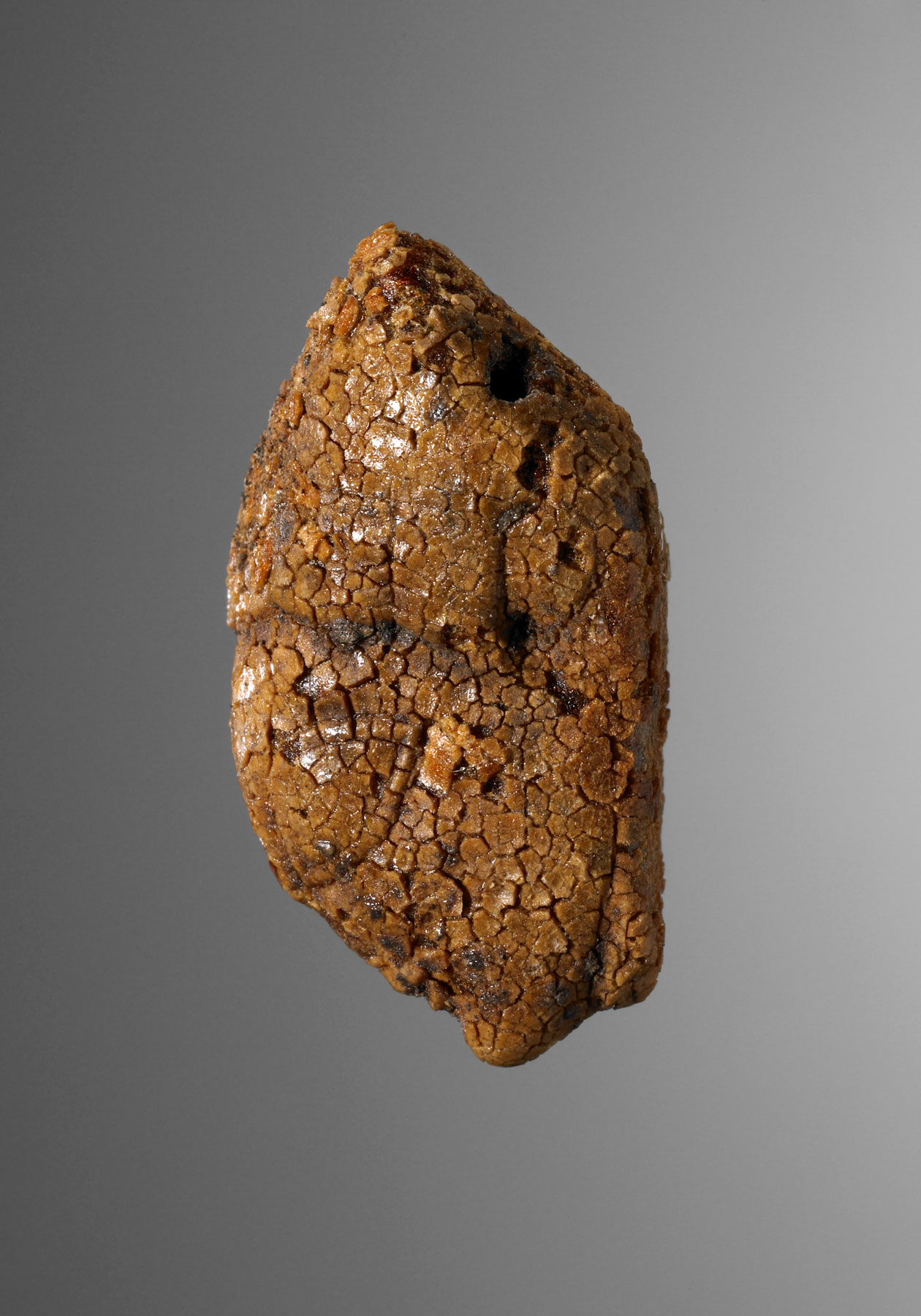19. Pendant: Female Head
| Accession Number | 83.AO.202.5 |
| Culture | Italic |
| Date | 425–400 B.C. |
| Dimensions | Height: 29 mm; width: 38 mm; depth: 14 mm; Diameter of suspension hole: 2 mm; Weight: 10.5 g |
Provenance
–1983, Antike Kunst Palladion (Basel, Switzerland); 1983, Vasek Polak, 1914–97 (Hermosa Beach, CA), donated to the J. Paul Getty Museum, 1983.
Condition
The pendant is in poor condition, and most detailed features are lost. The nose and the left eye are broken off. The surface is chipped and flaking, with many minute losses. The outermost, brown alteration layer is flaking; the layer below is more compact and stable. Opaque and yellow-brown in ambient light, the pendant is translucent and dark orange in transmitted illumination. There are no visible inclusions.
Description
The pendant was carved from a lobed piece of amber. One section was used for the face, and a small spur for a section of the neck—this is located to the back of the mouth. A third lobe, at the back of the head and flangelike in shape, is plausibly a wing. It does not have any engraved lines.
83.AO.202.5 represents the head and a section of the neck of a female. Although the piece is fragmentary, it is evident that the head was wide across the brow and tapered at the chin, much like that of (cat. no. 18). The left eye and the bridge of the nose are broken off. The nose was clearly triangular in form, although much of it is missing. The upper lip area is short. The mouth is almost straight, but the bottom lip turns up slightly. The engraved line that separates the lips is curved upward slightly in a smile. The sulcus is short and shallow, and the chin wide and full, with a prominent chin boss. Above the brow is a fringe of bangs, the strands marked by vertical striations. Behind the bangs is a smooth, rounded-top cap. The two engraved lines separating the hair from the hat depict the rim, which is either a flat turnup or a rounded roll-up.
The suspension perforation runs through the top of the head. When worn, the head would have been seen in profile to the left, the forehead tilted forward, casting the eyes downward.
Discussion
From the front, the lips, mouth, and chin resemble those of two heads, one from Tomb 164 and one from Tomb 428 at Banzi.1 The lower part of the face bears a familial likeness to a seated figure from Tolve.2 For further discussion, see .
Notes
Bibliography
- Bottini 1987
- Bottini, A. “Ambre a protome umana dal Melfese.” 41 (1987): 1–16.
- Magie d’ambra 2005
- Magie d’ambra: Amuleti e gioielli della Basilicata antica. Exh. cat. Potenza, 2005.

